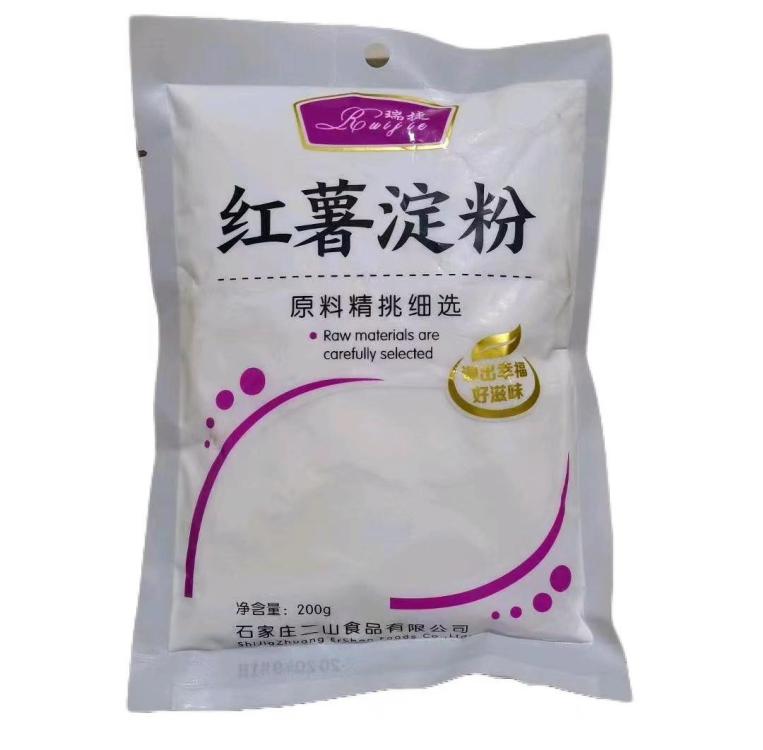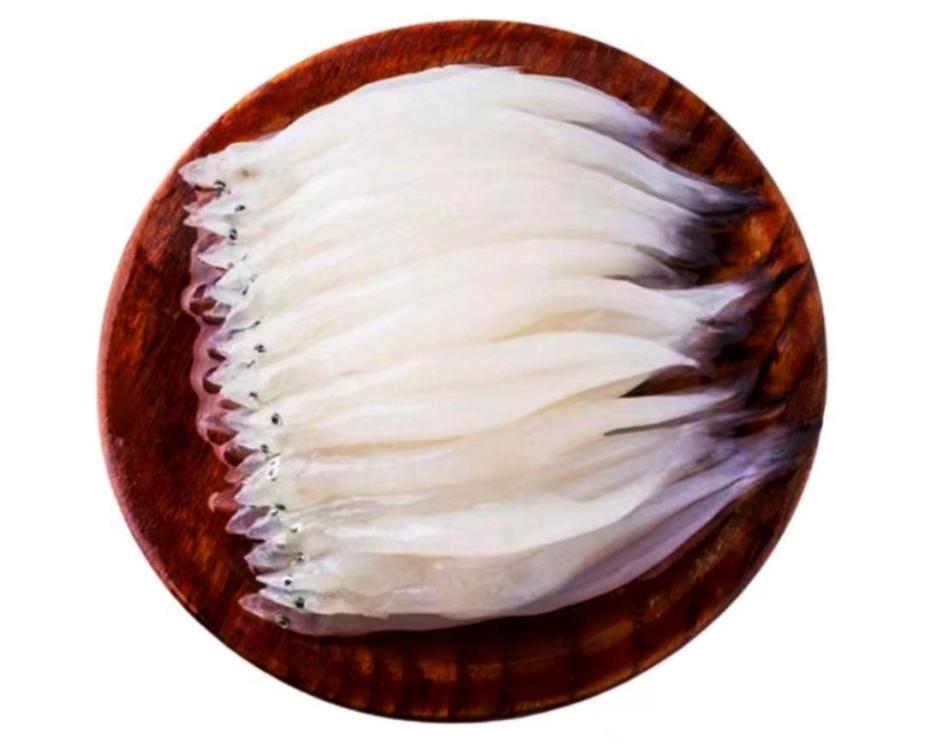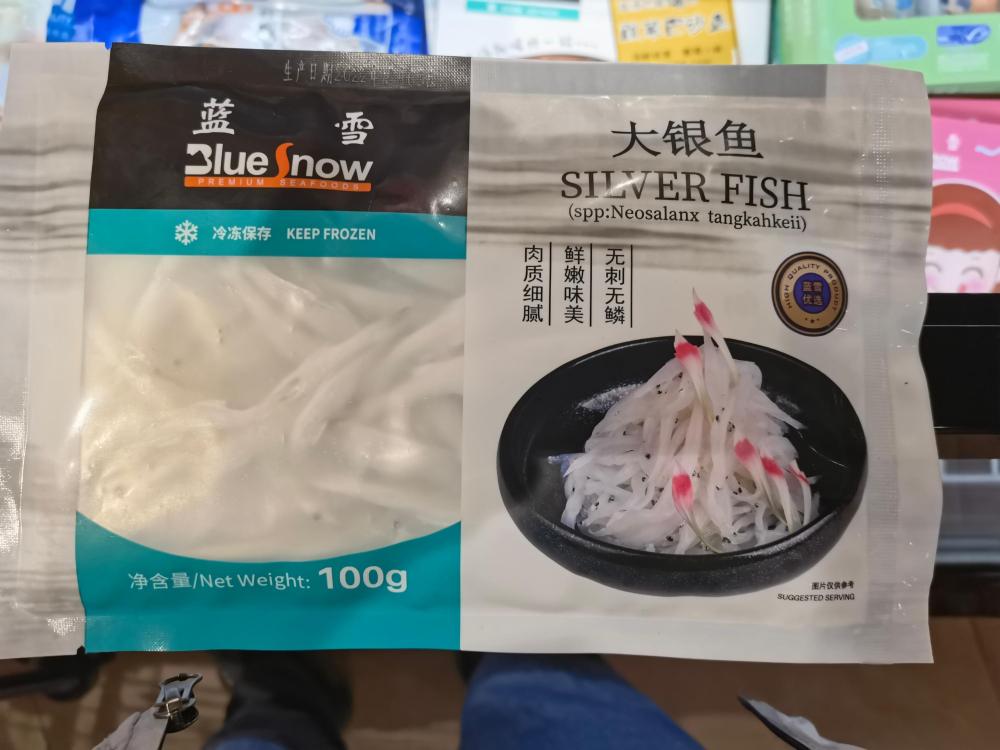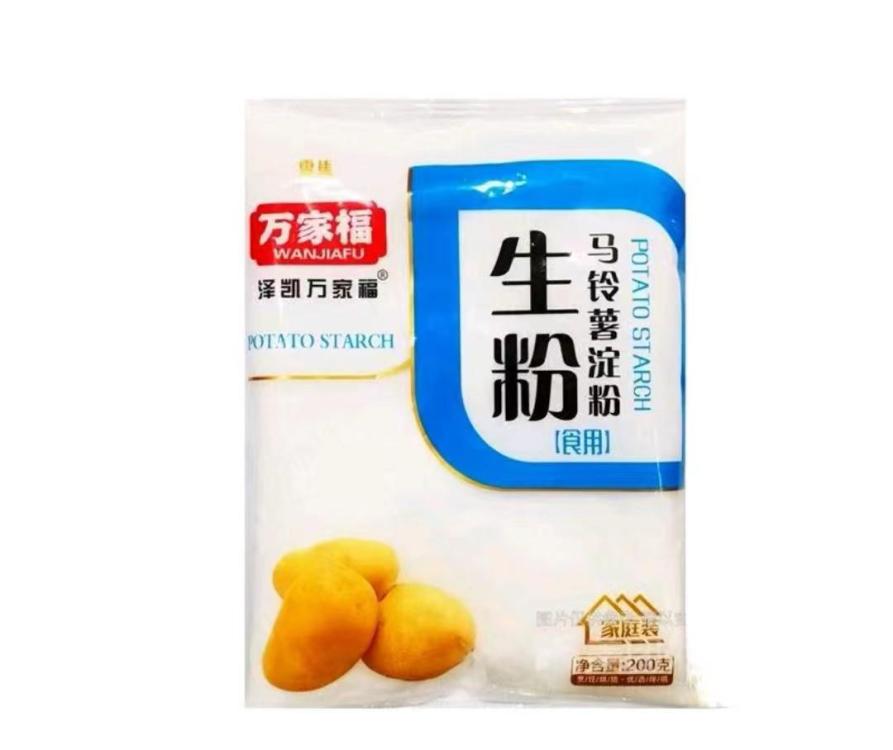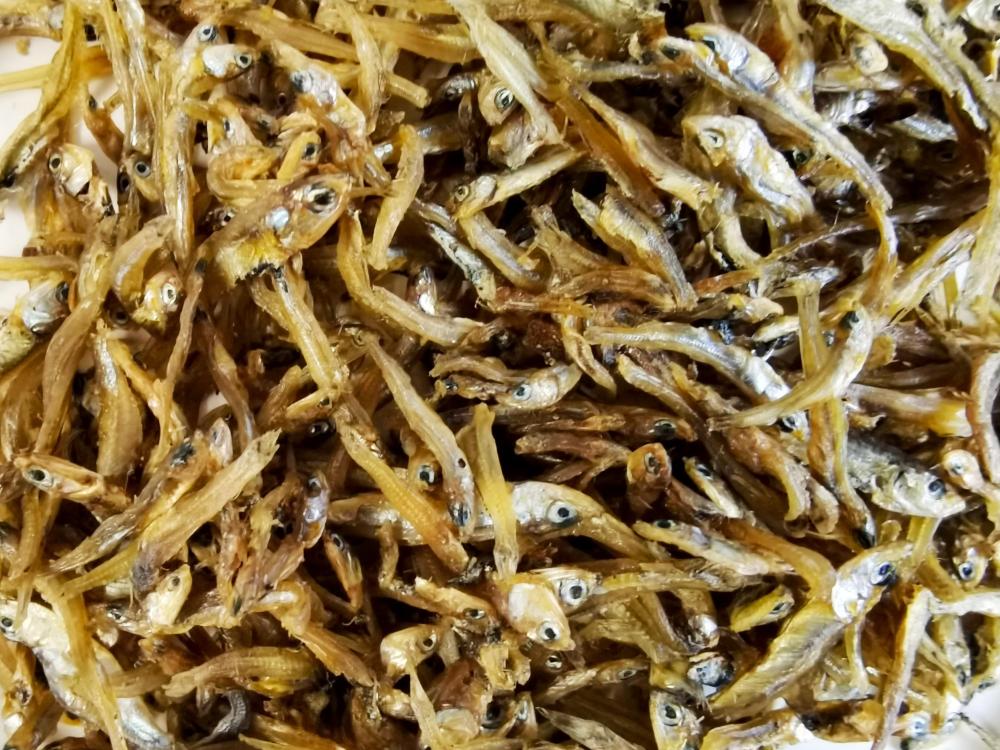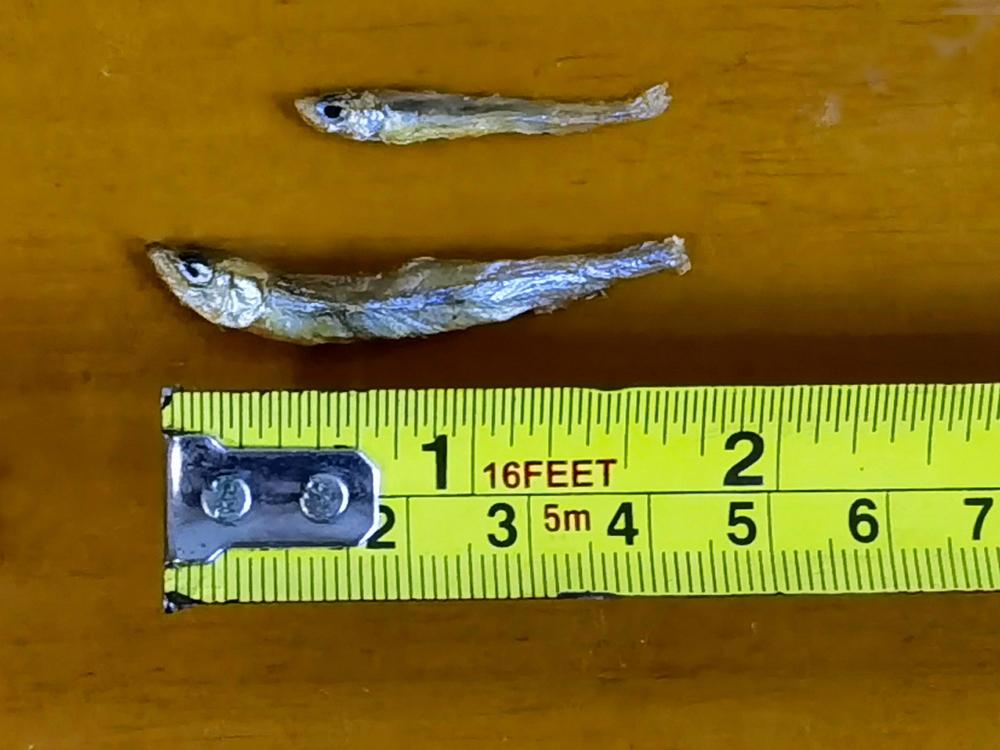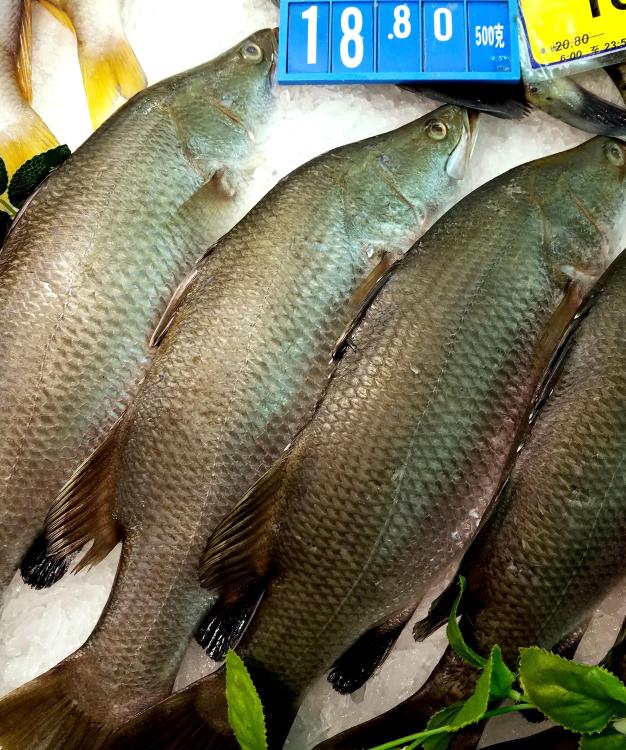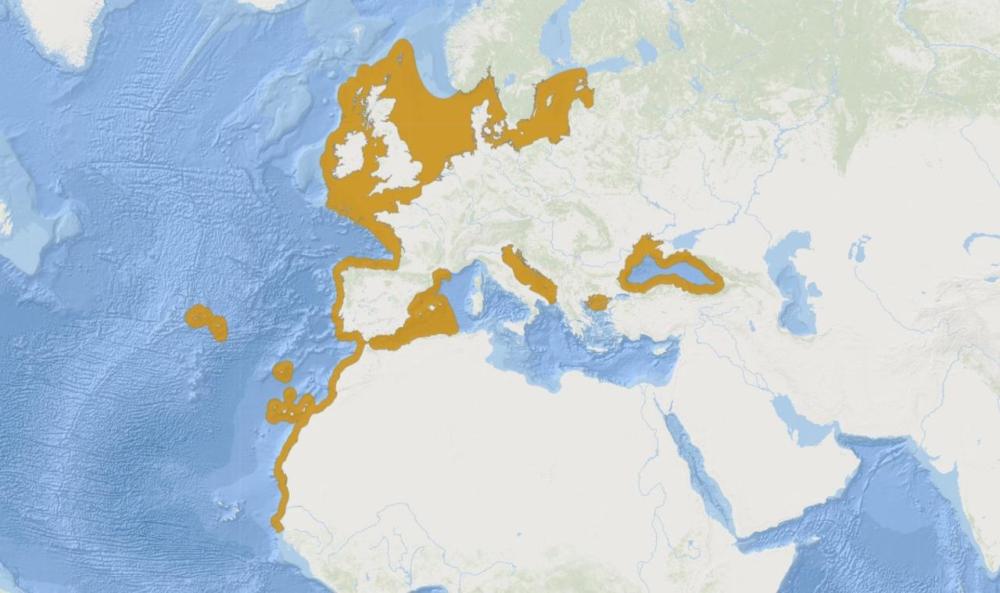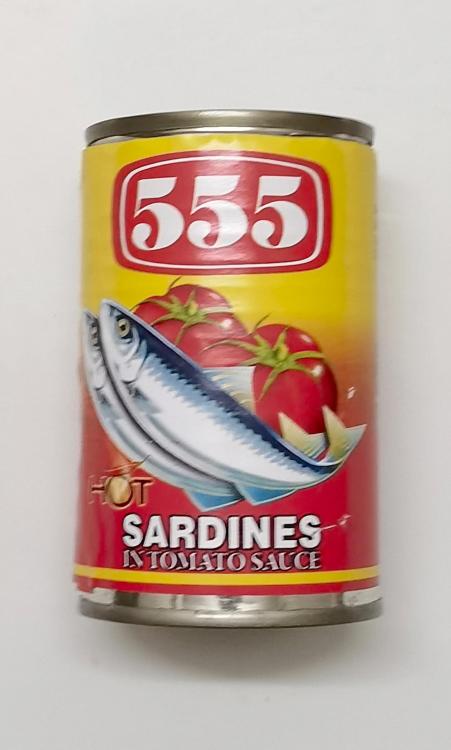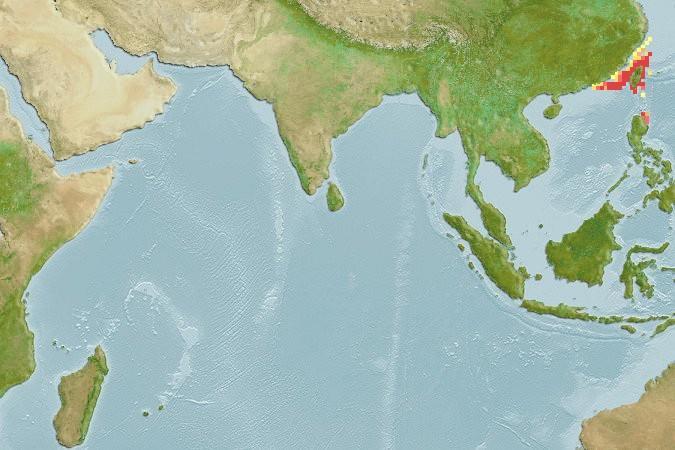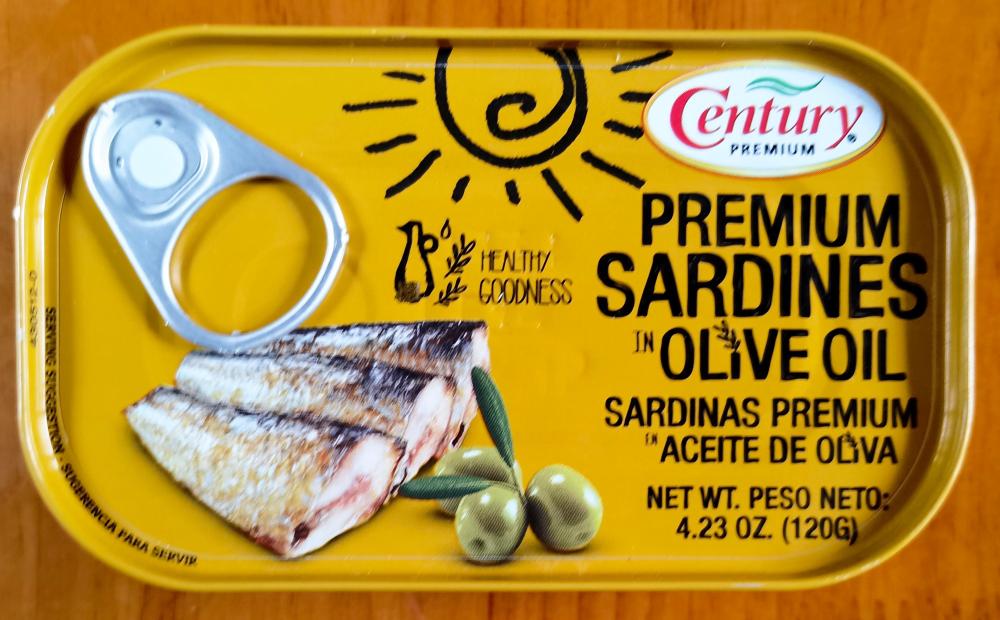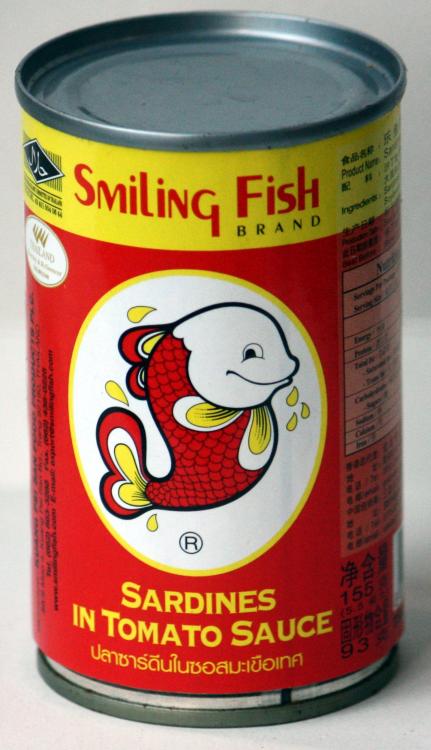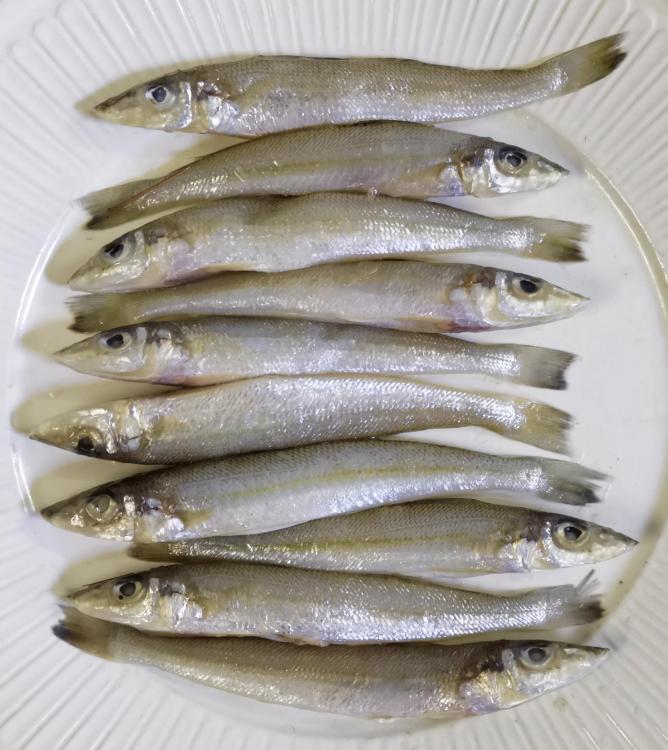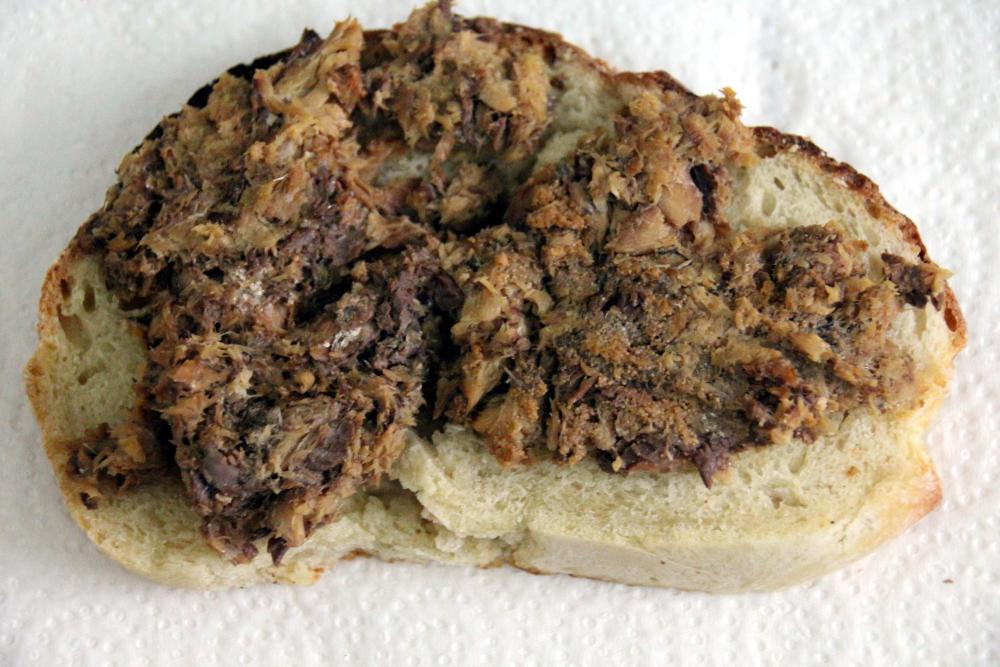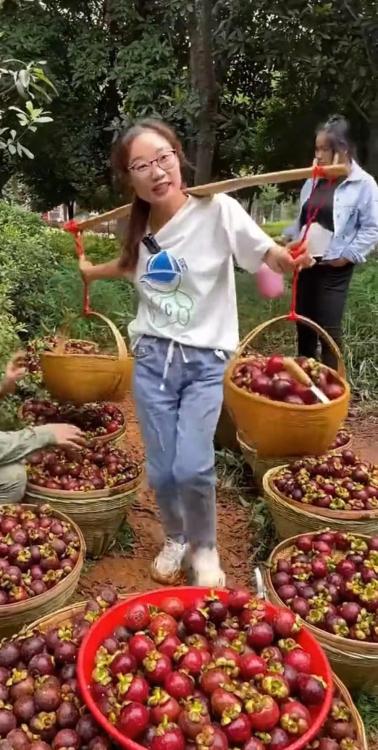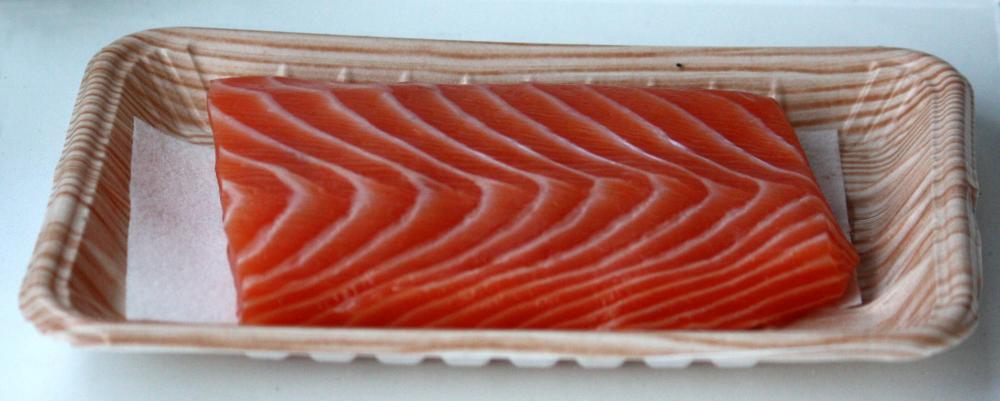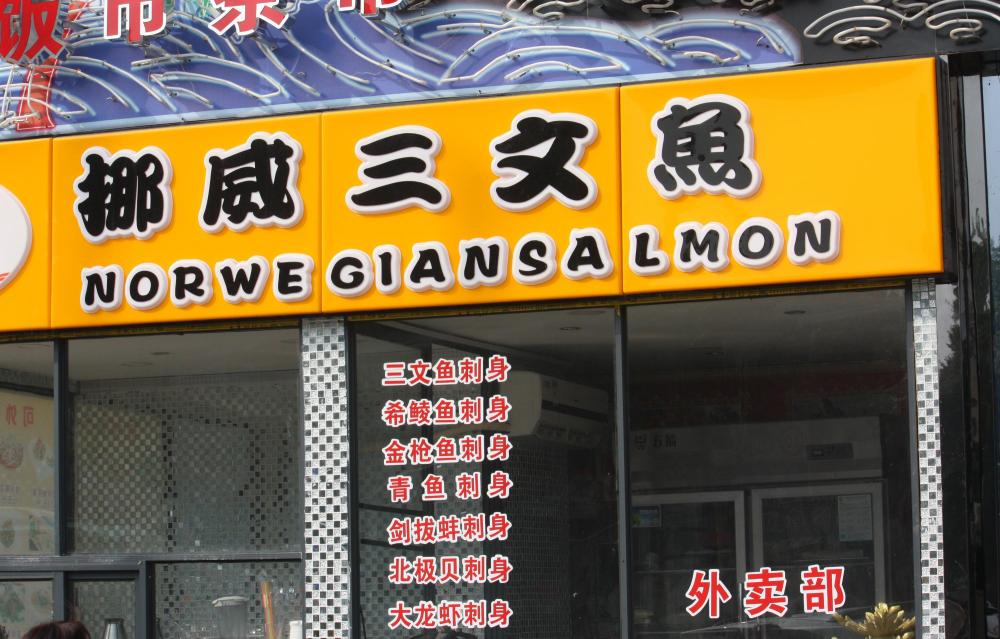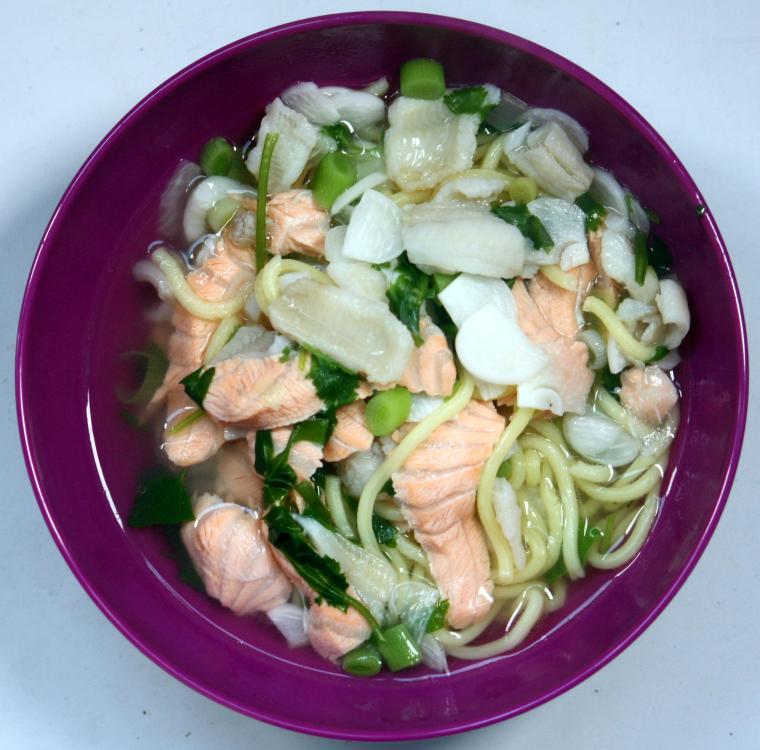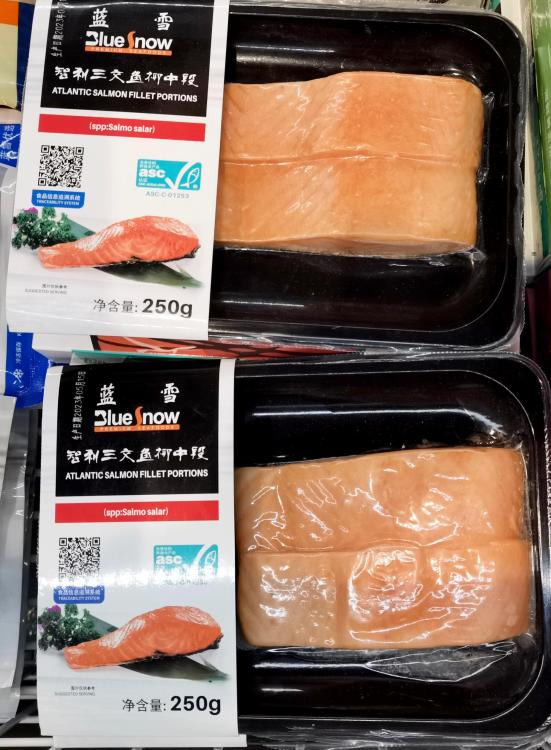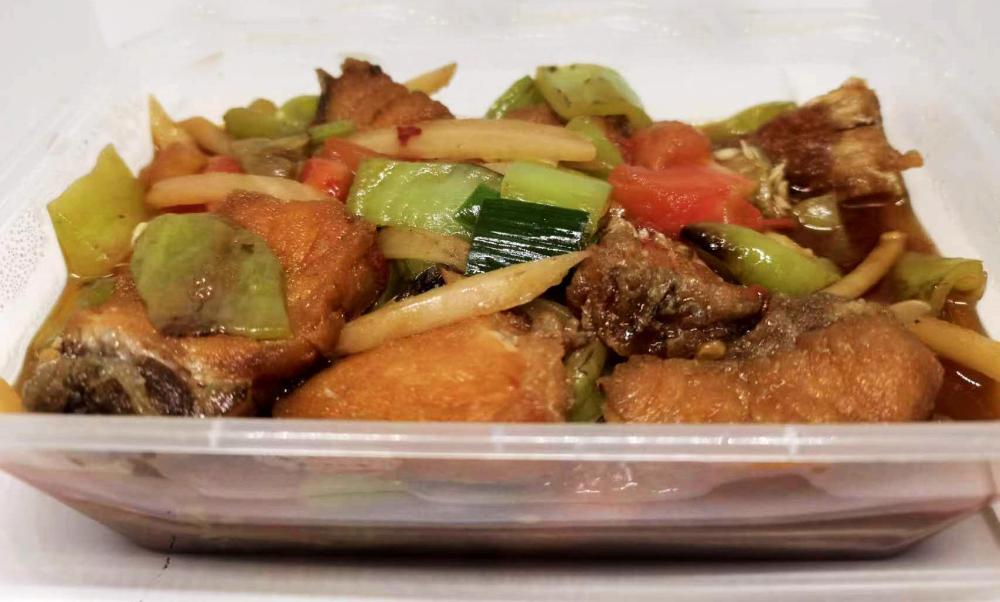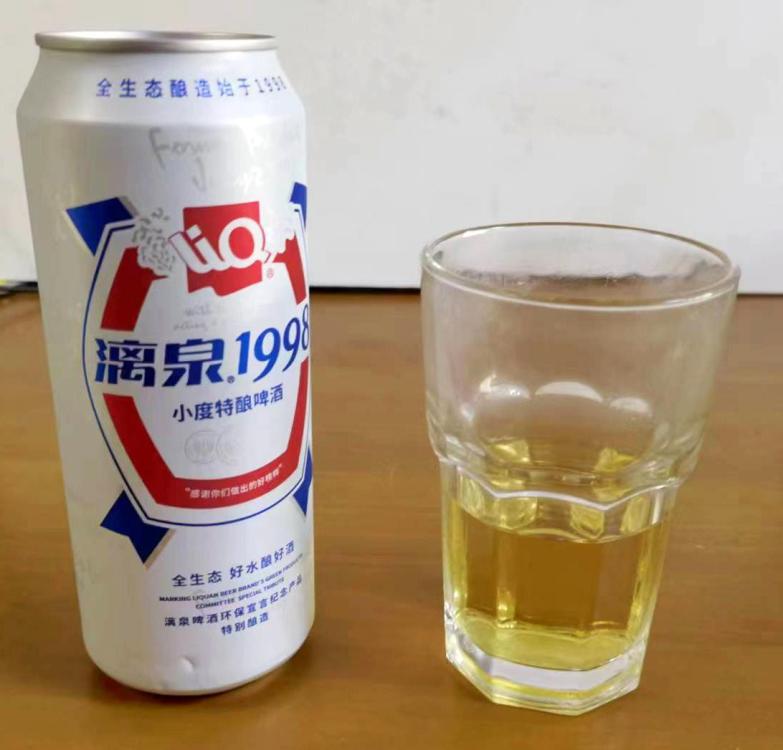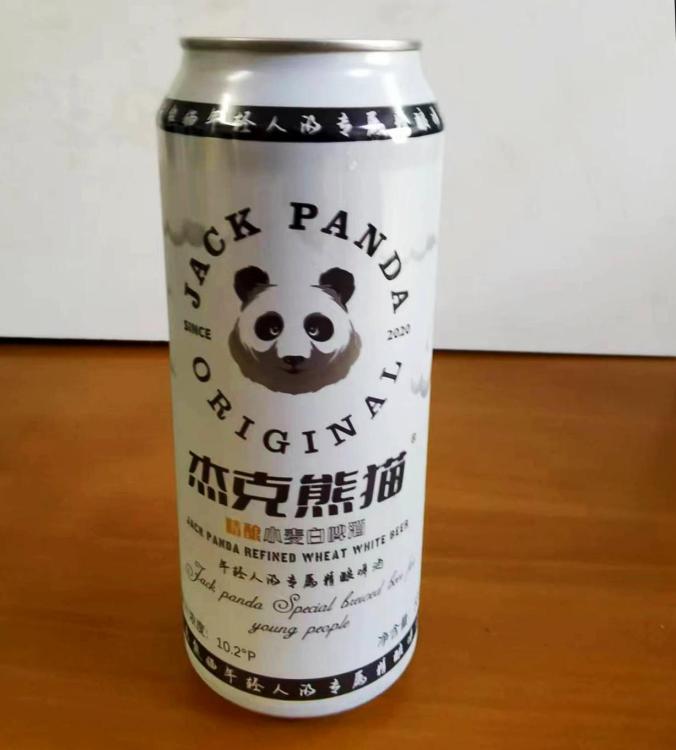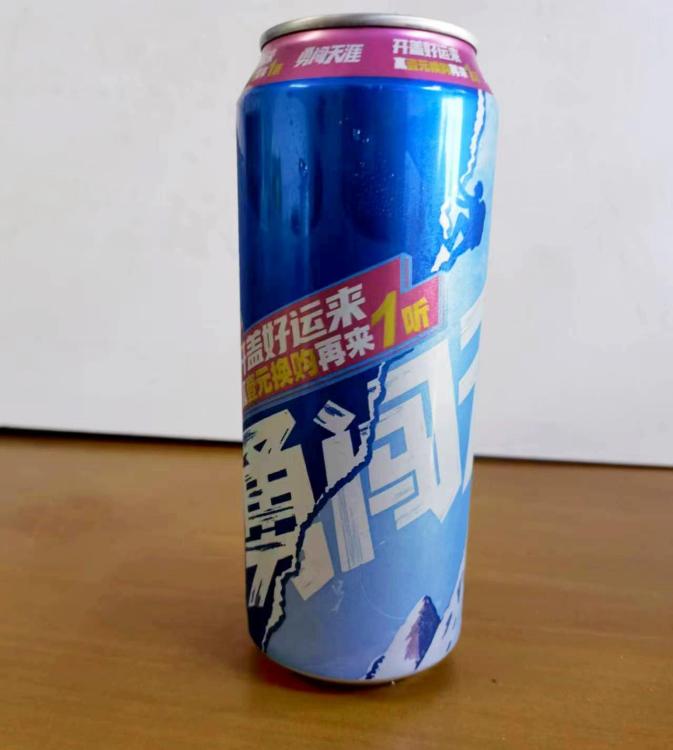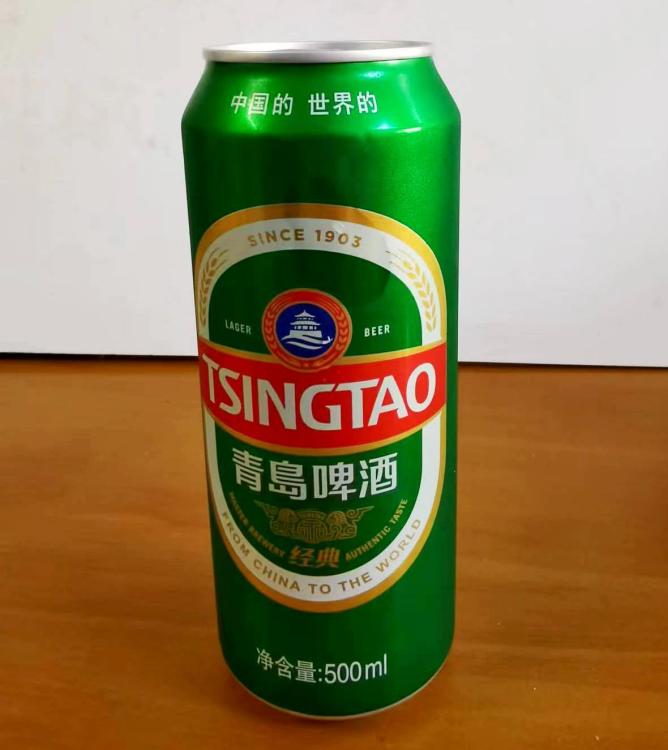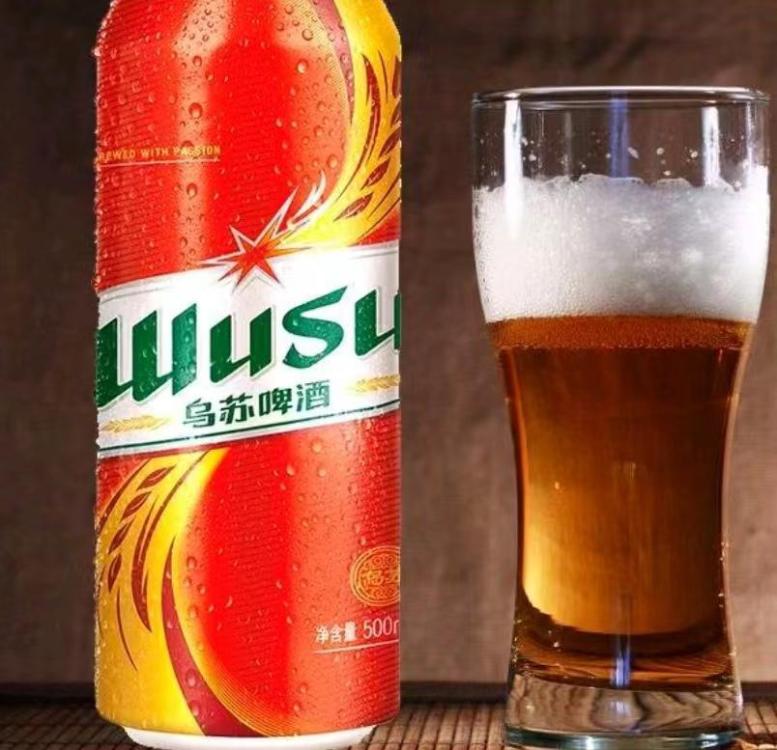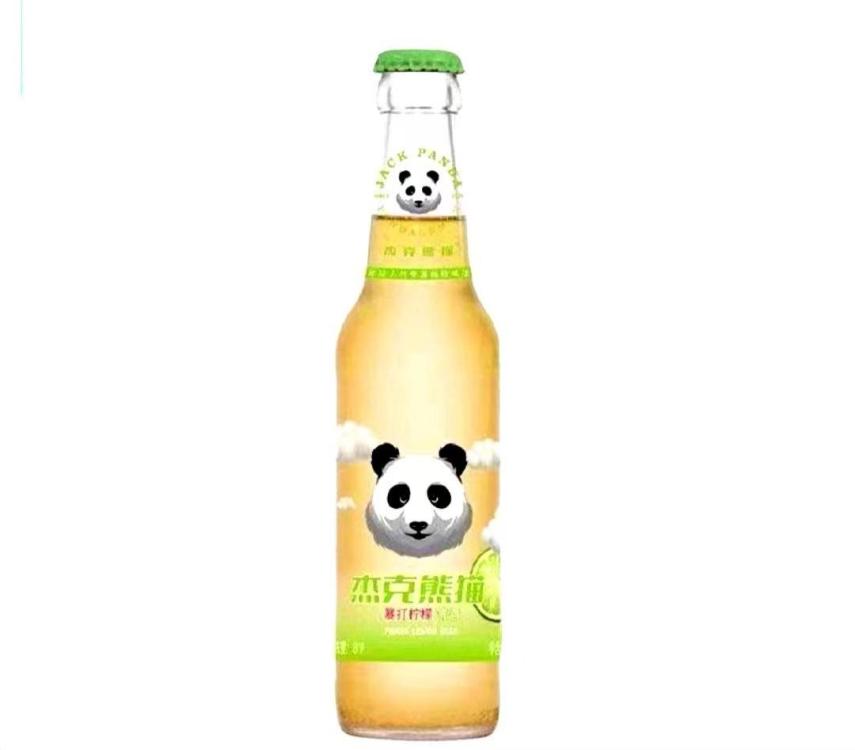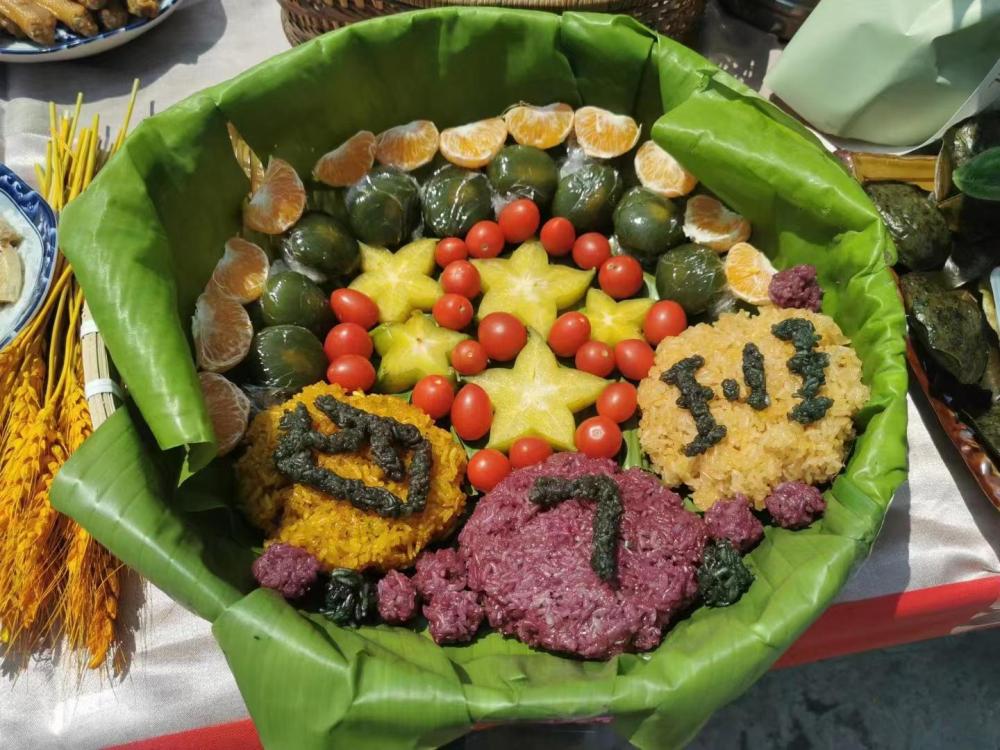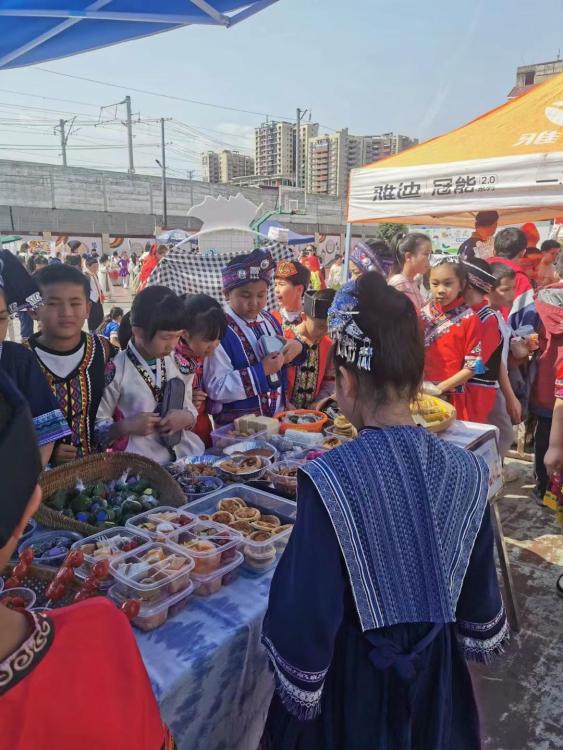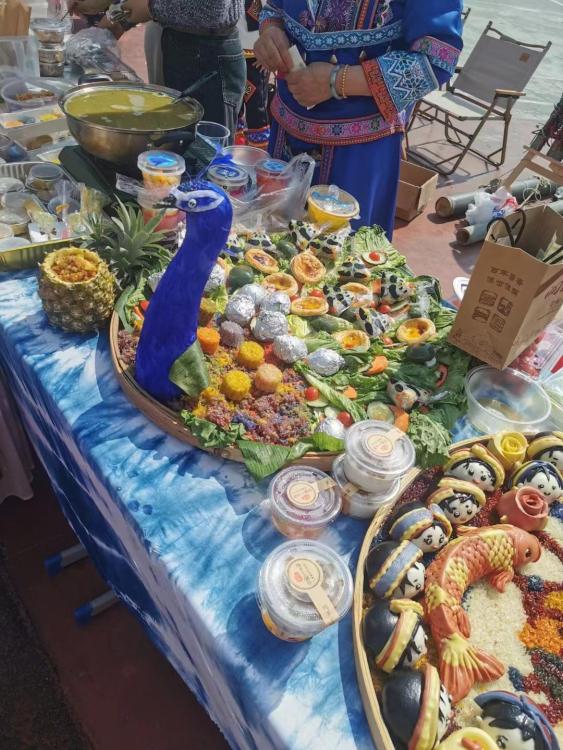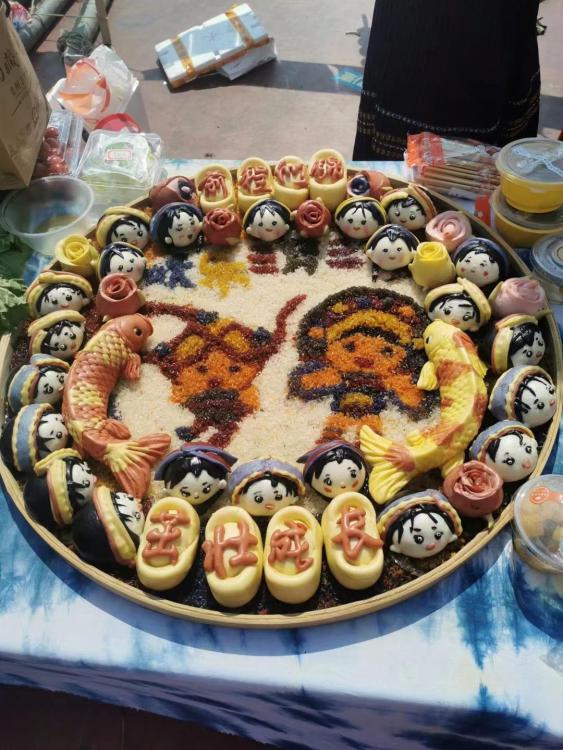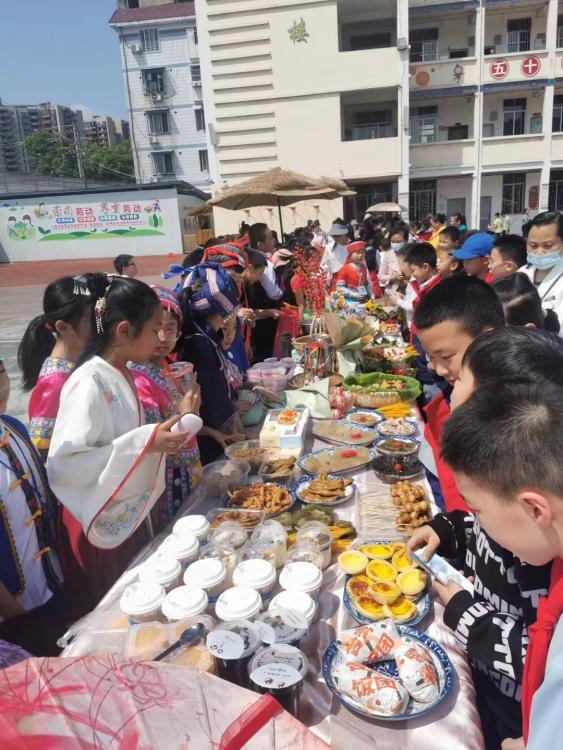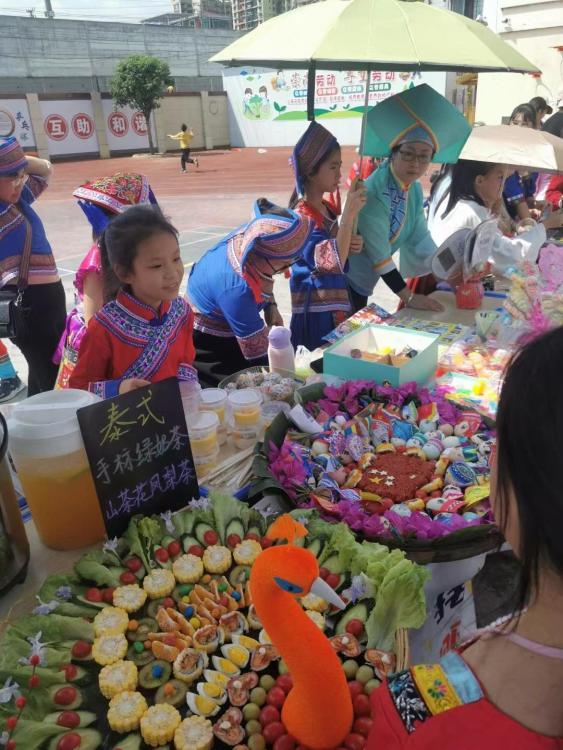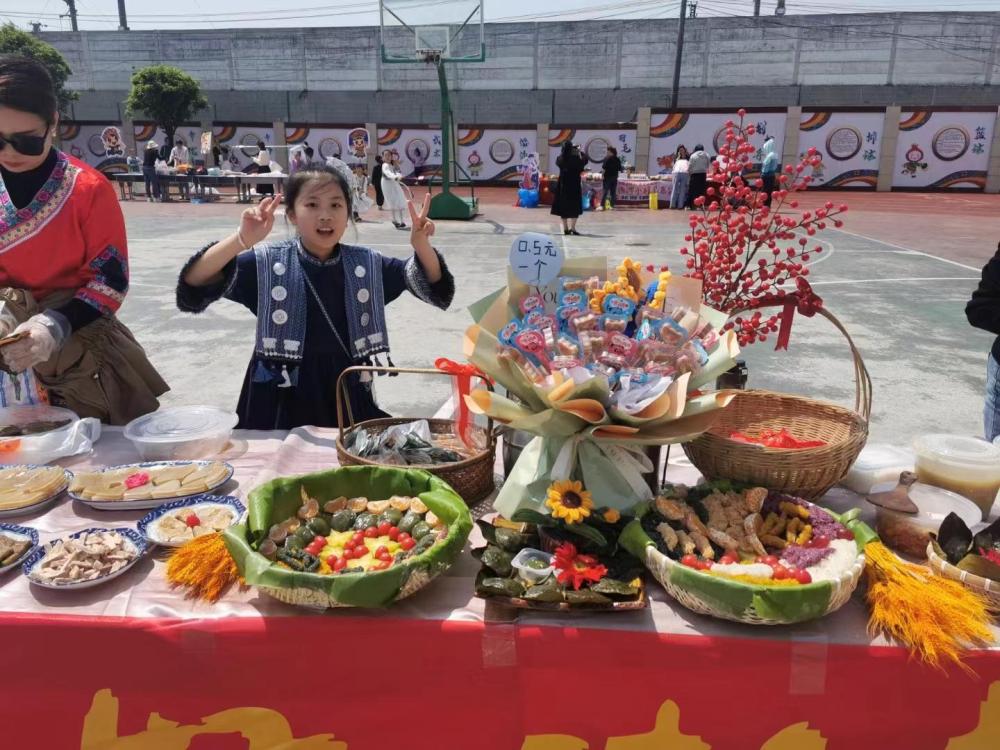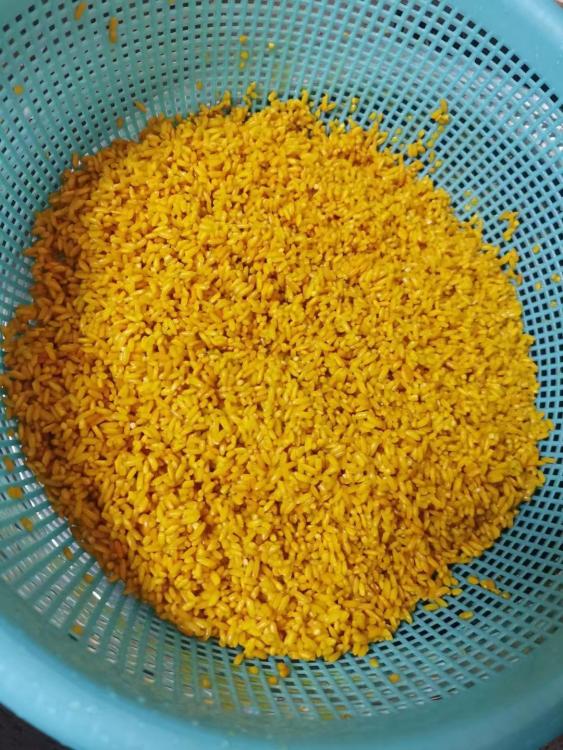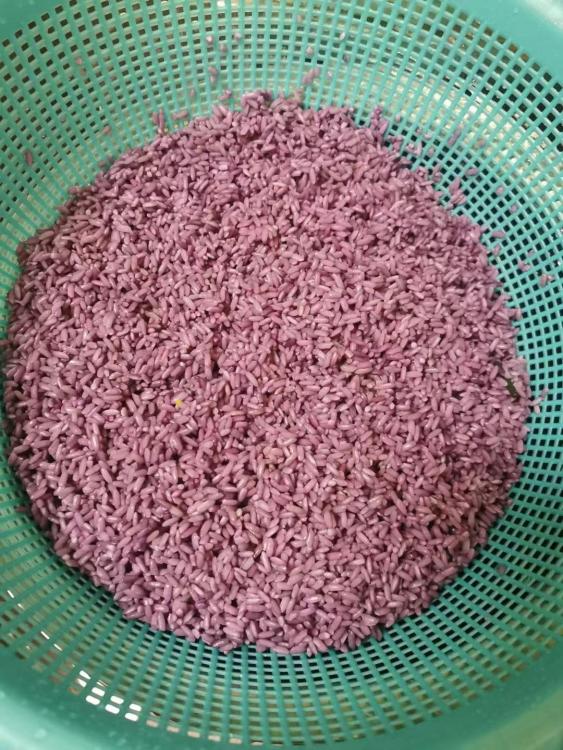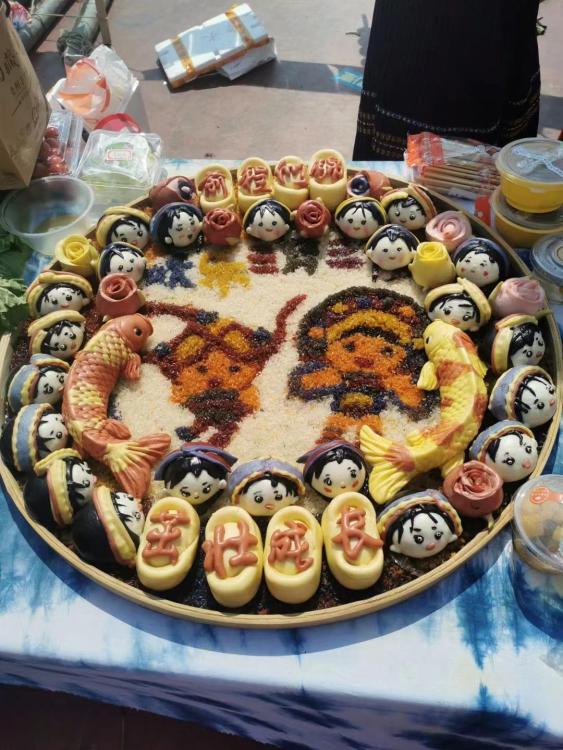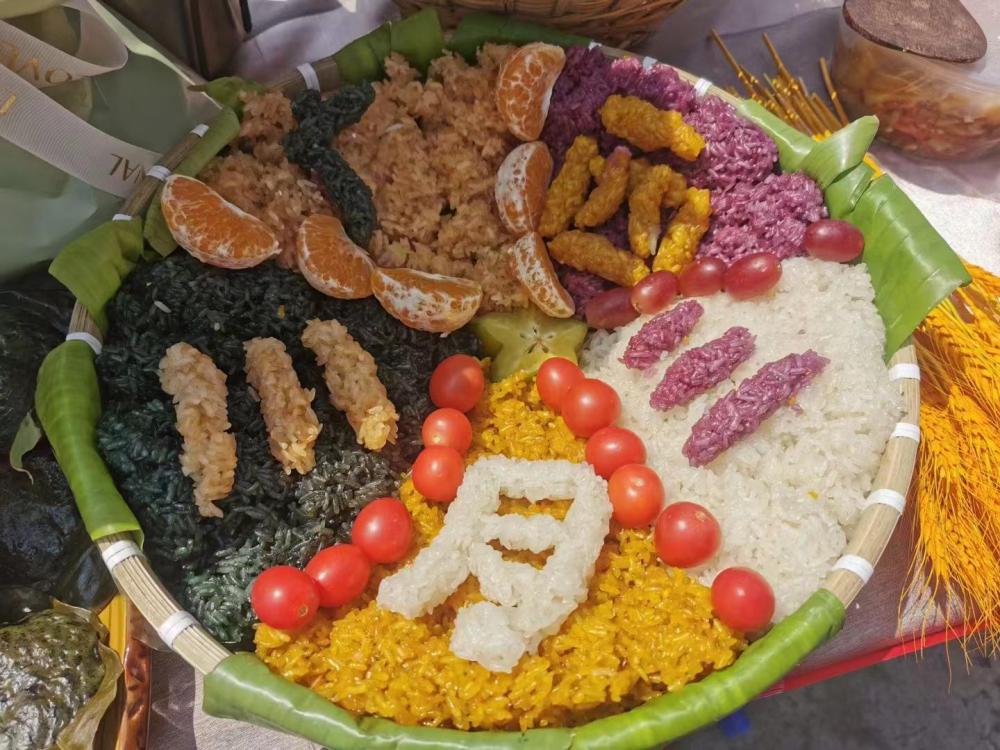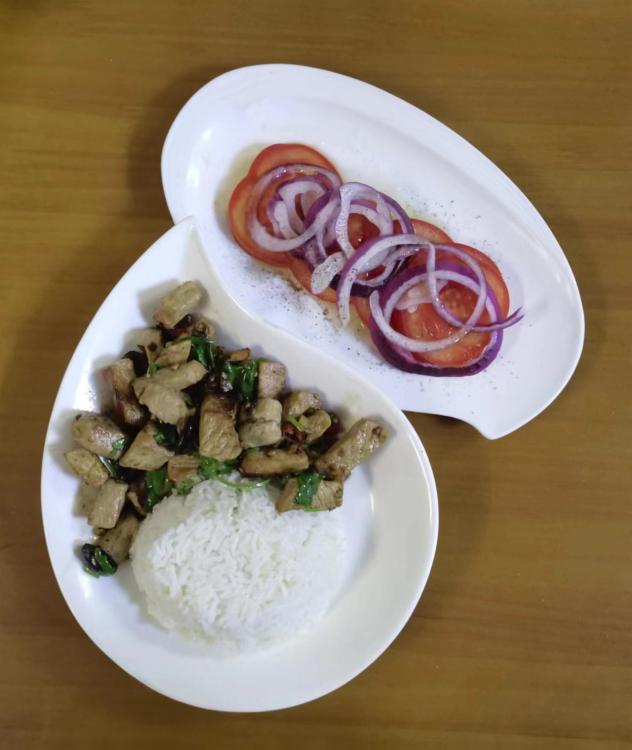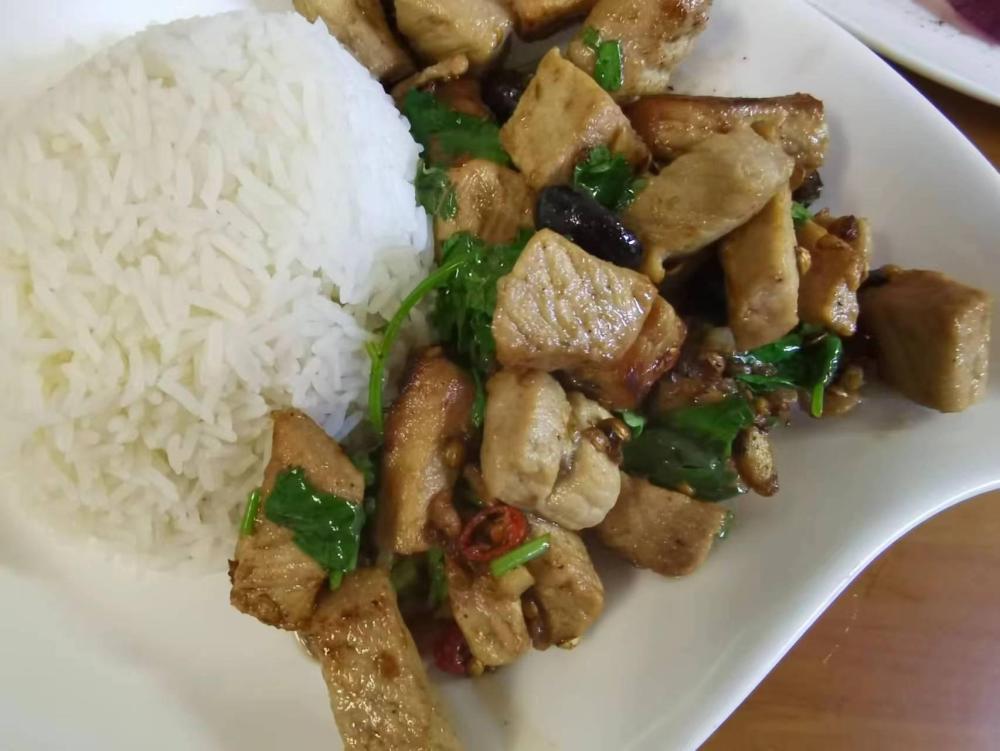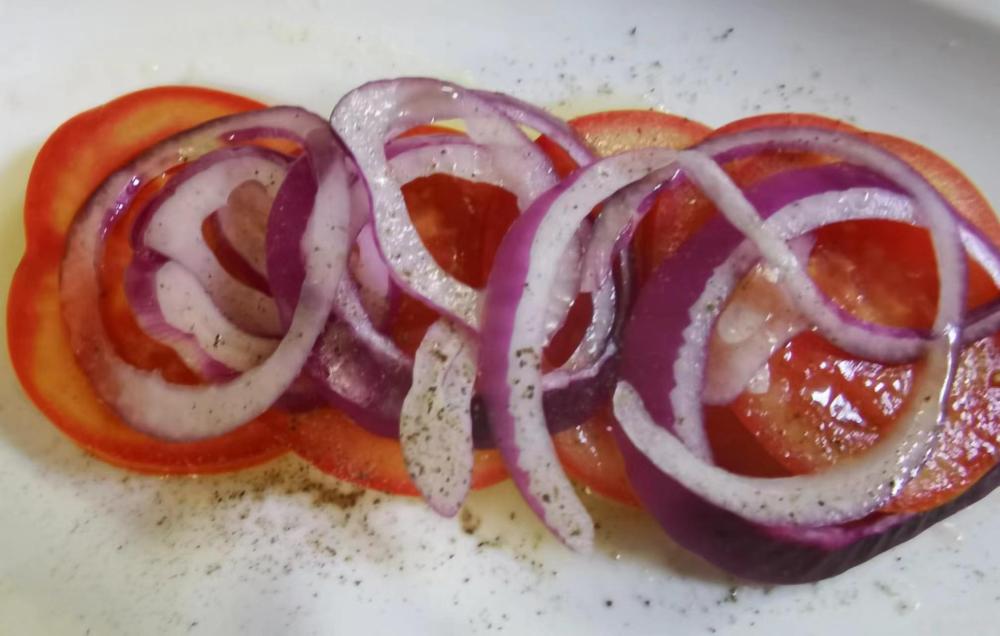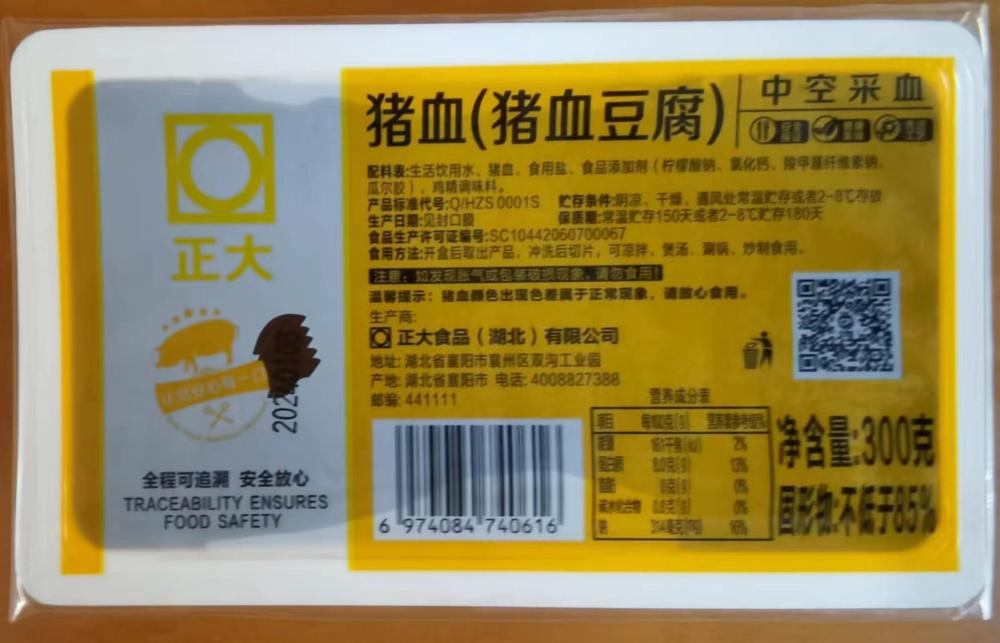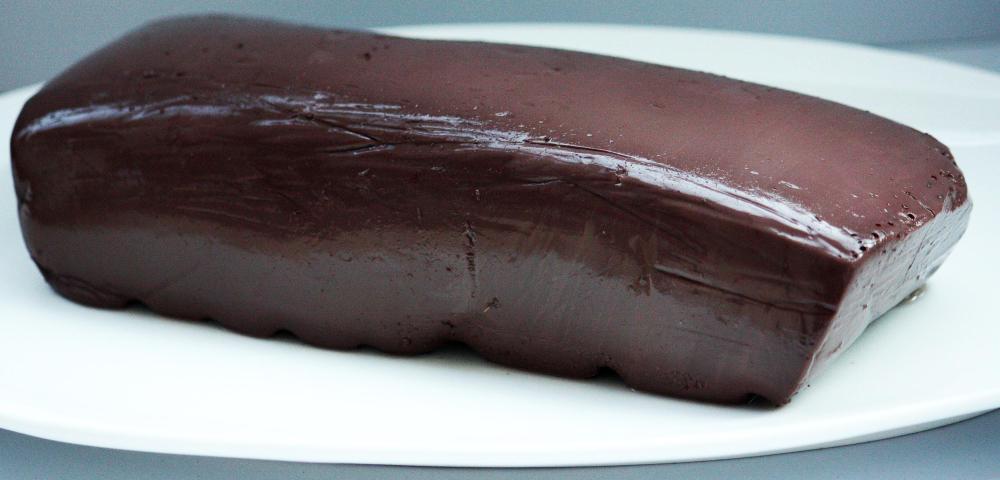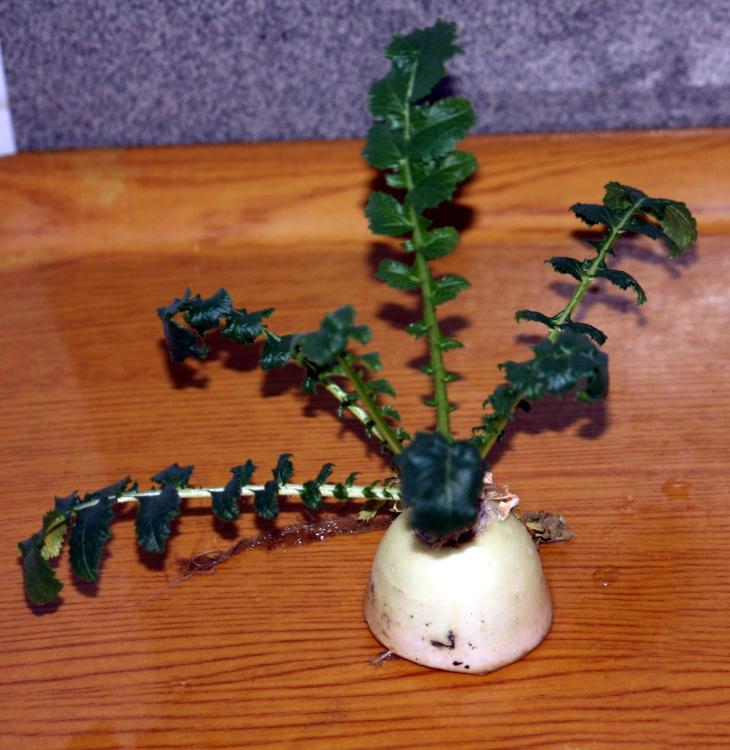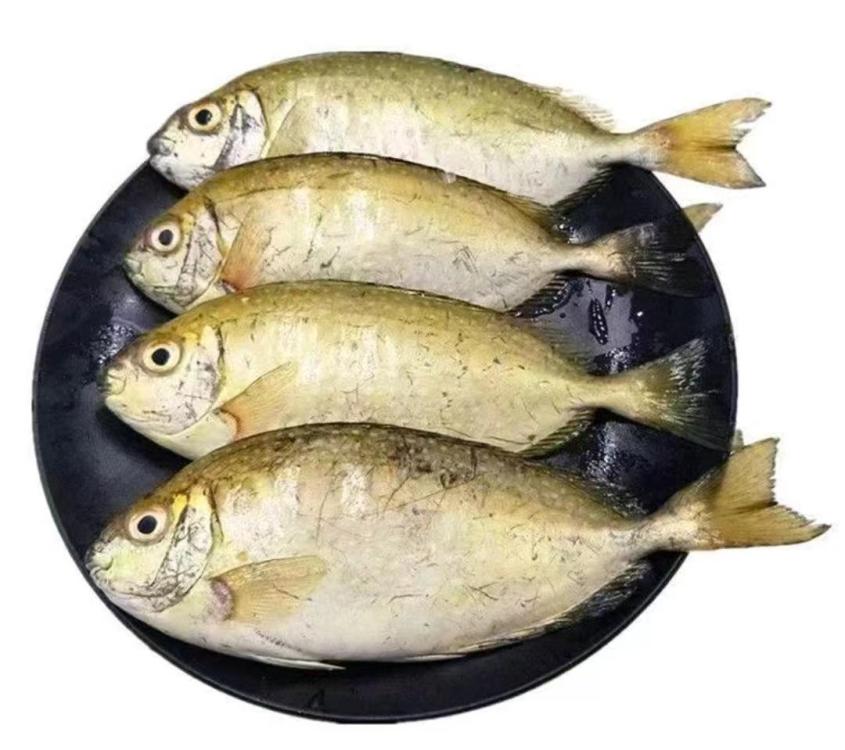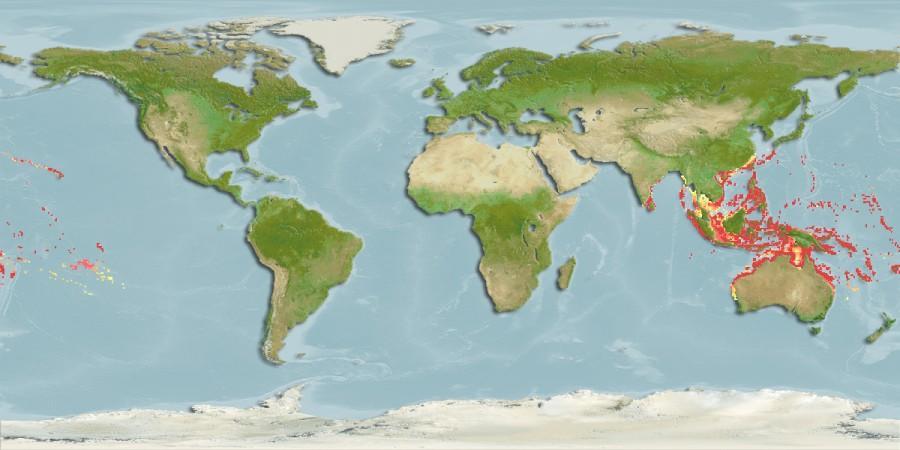-
Posts
16,679 -
Joined
-
Last visited
Content Type
Profiles
Forums
Store
Help Articles
Everything posted by liuzhou
-
-
On its own, 银鱼 / 銀魚 (yín yú) refers to ‘Chinese whitebait‘ but with the addition of 大 (dà), meaning large the whole phrase refers to S: 大银鱼; T: 大銀魚 (dà yín yú), ‘silver fish’. Unfortunately, that English name is used to refer to several unrelated species. What I’m thinking of here is Neosalanx tangkahkeii, sometimes also called Chinese ice fish. Whatever name you prefer, they are freshwater fish found in lakes, both natural and man made such as reservoirs, as well as in the Yellow and Yangtze Rivers in central China. They are only usually around 64 mm / 2½ inches in length and only live for a year. Live they are transparent, but turn white on dying. They are sold frozen or dried and used in soups or with eggs in omelettes where they cook in seconds. I’ve also had them battered and deep fried then scattered over vegetables. They are rather mild flavoured. The dried version is often misnamed as ‘white anchovies’. They are unrelated to anchovies. They are also exported to Japan to be used as sashimi.
-
As noted in this post about starches used in China, I exclusively use potato when starch is required and have been doing so for decades. It is the choice of most cooks, professional or amateur in Sichuan cooking as well as here in Guangxi, although other starches are used more in other provinces and areas. I don't see much difference, if any, between them.
-
When I was rather ill last year, I received a number of human protein injections. I'm pretty sure they were low fat!
-
No one here in China is going to follow that advice. It is standard to use the aromatics first to flavour the oil everything else will be cooked in.
-
Who woke them up? Most of these were debunked years ago. I disagree with No. 3 though. Starch in rice isn't the only reason to wash it. Depending on where it's sourced and processed, there can be all sorts of unwanted contaminents in there. It certainly doesn't do any harm to rinse / wash it.
-
Must have been a tasty dishcloth. I and the friend who shared it were well happy.
-
I’ve been trying for years to identify this species to no avail. In Chinese, they are S: 小公鱼; T: 小公魚 (xiǎo gōng yú), which simply means ‘little common fish’. They are sold here alongside dried fish of all sizes, but are in fact deep fried whole and ungutted and sold as S: 油炸小公鱼; T: 油炸小公魚 (yóu zhá xiǎo gōng yú), ‘deep fried small common fish’. There is an indication that they are river fish, so I’m calling them ‘minnows’. The are certainly small enough, ranging from approximately 25.4mm / 1 inch to 50.8mm / 2 inches in length. They are added to congee and stir-fries to give a savoury taste or enhance umami.
-
er, the point of using the 24-hour clock is to remove the need for am and pm therefore removing any ambiguity.
-
I occasionally see barramundi here in southern China, too. (I’m just above the border with Vietnam, so sometimes classified informally as SE Asia). It is indeed a fine fish. Whether the fish is fresh or frozen and defrosted, I’m not sure. The name in Mandarin Chinese is 金目鲈 (jīn mù lú), literally ‘golden eye bass’ or 尖吻鲈 (jiān wěn lú), lit. ‘pointed snout bass’. I only bought it once and made fish and chips. Happy mouth! Must look out for it again.
-
If I tell you that the third character in the name S: 沙丁鱼; T: 沙丁魚 (shā dīng yú), 鱼or 魚means fish, then you might be able to guess which fish I’m talking about from the pronunciation of the two preceding characters - 沙丁 (shā dīng). Think phonetically. OK. It means ‘sardine’, for which Chinese has adopted this as a loanword from the English using the characters they consider closest in Chinese phonology. But that doesn’t help much; sardine isn’t a species of fish as such, but a group of different species in the herring family, Clupeidae. What you think of as sardines may be a very different species from what I think. For me, sardines are Sardina or Clupea pilchardus, the European sardine found in the waters illustrated in the map below. Public Domain Map My main, usually reliable Chinese-English dictionary claims that 沙丁鱼 means Clupea pilchardus. However, the size and shape of these is different and it’s unlikely that China would be importing sardines from Europe when the waters off the coast of southern China is home to Sardina hualiensis, a Pacific sardine also known as Taiwan sardinella. Distribution of Sardina hualiensis, Taiwan sardinella. AquaMaps (2019, October). Computer generated distribution maps for Sardinella hualiensis (Taiwan sardinella), with modelled year 2050 native range map based on IPCC RCP8.5 emissions scenario. Retrieved from https://www.aquamaps.org. So, I’m betting these are those or another of the Pacific varieties such as S. brachysoma. Their descriptions more closely fit. Chinese sardines Interestingly, I’ve never encountered China processed canned sardines. Although canned sardines are available in some stores, they are never Chinese. We get ‘555’ brand from the Philippines and ‘Smiling Fish’ brand from Thailand. Few supermarkets carry canned sardines; almost unthinkable in the west. I buy Portuguese canned sardines in boxes of 20 cans from an expensive import store. Happiness is sardines on toast.
-
Doesn't it have a 24-hour clock?
-
Good news for liuzhou. The mangosteen harvest is coming in. They haven't reached my fruit shop yet, but they're on the horizon.
-
No identification doubts about this species but some confusion. S: 鲑鱼; T: 鮭魚 (guī yú) is the semi-official name for salmon but the sound-alike loanword from English, S: 三文鱼; T: 三文魚 (sān wén yú) is more common. Where the confusion comes in is that although some species of Pacific salmon do reach west to China, especially S: 大鳞大麻哈鱼; T: 大鱗大麻哈魚 (dà lín dá má hǎ yú), Oncorhynchus tshawytscha, king salmon aka Chinook salmon, the fish sold here is always Salmo salar, North Atlantic salmon from the other side of the world. It certainly doesn’t swim here. Most salmon in China is imported from Norway, making it an expensive choice for the dinner table. It is only found in the more upmarket supermarkets and in restaurants, especially Japanese restaurants (nearly all of which are China owned and staffed). Supplies from Norway were seriously disrupted when China threw a temper tantrum after the 2010 Nobel Peace Prize was awarded to imprisoned Chinese dissident Liu Xiaobo. Imports were unofficially embargoed for three years and trade talks frozen. Liu died in prison in 2017 of liver cancer, aged 61. In 2021, it was announced that China had successfully harvested its first batch of 3,000 farmed salmon from a Yellow Sea fish culture zone. Efforts to build a full scale salmon farming program are continuing. Meanwhile we are back to eating salmon from the fjords of Norway. There was a dip in supply and therefore consumption during the height of the pandemic but it has now recovered. In my experience, most of the salmon is eaten as sushi* or in other Japanese style preparations. None of my Chinese language cookbooks have recipes. Recipes on the internet are ‘China inspired’ rather than Chinese. Many are just recipes for other fish with salmon substituted for native fish. Not that there’s anything wrong with that. Salmon and sole ramen Smoked salmon can be bought online, but is not of great quality. In 28 years, I've only seen it once in a supermarket. Unfortunately, I bought it. Having been raised by Scotland's premier salmon rivers, my expectations were high. Never have they fallen so low. It was rank. * Sushi was introduced to Japan from China (but not using salmon) in the 8th century CE then adapted and elevated to its current prestige level.
-
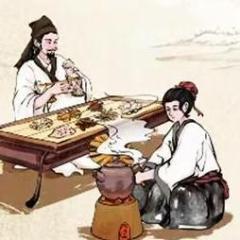
A pictorial guide to Chinese cooking ingredients
liuzhou replied to a topic in China: Cooking & Baking
Beer (啤酒 - pí jiǔ) 🍺 is used as an ingredient in many recipes around the world, but I don’t think many people associate it with Chinese cuisine as an ingredient. They’d be wrong. There aren’t so many dishes use it, but two are well-known throughout the country. I’ll came to those in a bit. First I need to look at the ingredient itself. Although not traditional, beer consumption in China is massive and its not just me consuming it. In the early 2000s, China passed the United States to become the world’s largest producer with an average of 42.20 billion litres per annum – it would be higher but Covid and the associated lockdowns bit hard. Most of this production goes to the domestic market, export still being extremely limited but growing. Besides innumerable Chinese manufacturers, the world’s brewing giants are also here both operating on their own and in joint ventures with Chinese companies. It would be a mammoth undertaking, if even possible, to list every type of beer available so I’ll just mention a few of the better known brands. Probably the best know outside China is S: 青岛啤酒 Trad. 青島啤酒 (qīng dǎo pí jiǔ), made in Qingdao in Shandong Province. This is one of only two products in China permitted to use the original transliteration as its name, so it is marketed as Tsingtao Beer. Tsingtao Brewery Co., Ltd. was established in 1903 by German and British merchants as Germania-Brauerei Tsingtao Co., Ltd. In 1916 Qingdao fell into Japanese hands following their invasion of NE China and the company was compulsorily sold to Dai-Nippon Brewery, the producer of Asahi beer, but soon taken back after the First World War in 1918. It then remained in Chinese hands apart from another brief Japanese take over in WWII. After Mao’s revolution and declaration of the People’s Republic in 1949, it was nationalised as a state controlled enterprise as Tsingtao Brewery Company Limited. Today it is the second biggest seller in China. The largest is 雪花啤酒 (xuě huā pí jiǔ), literally ‘snowflake beer’ but usually referred to simply as Snow Beer. This is from Shenyang, capital of Liaoning Province in north -east China, and the company, founded in 1993, is owned by China Resources Enterprise, which has over 90 breweries across China. Heineken holds a 40% stake in the brand. You may not have heard of it, but this is the best selling beer in not only China, but the world. Snow Beer Another giant is 燕京啤酒 (yān jīng pí jiǔ), literally Beijing beer, Yanjing being an old name for China’s capital. Yan is pronounced ‘yen’ in Chinese. The company was established in 1980 and is owned today by Beijing Yanjing Beer Group Corporation. Besides their own brand, Yanjing beer. They have also acquired other brands across China, including my local brand. 漓泉啤酒 (lí quán pí jiǔ) is now made by Yanjing Beer (Guilin Liquan) Co., Ltd. in Guilin, an hour up the rail tracks from Liuzhou. In 1998, then US president, Bill Clinton visited Guilin and they launched a commemorative beer, 漓泉1998 (lí quán 1998), Liquan 1998, which has since become their largest seller. One unusual beer you are unlikely to find outside China for now comes from China’s Xinjiang Uygur Autonomous Region in the far west. Despite being predominantly Muslim, they like a beer or three in the desert and top-ranking is S: 乌苏啤酒; T:烏蘇啤酒 (wū sū pí jiǔ) named after the town of Wusu where it is brewed. Despite its exotic location, the Wusu Group is 100% owned today by Carlsberg. The beer, Xinjiang’s best-seller by far, has a reputation of being easy to drink, but with a potent intoxicating effect that hits the drinker unexpectedly. That reputation has been exaggerated by Carlsberg's marketing people. Finally, wheat white beers are becoming popular with a recent newcomer brand, 杰克相貌啤酒 (jié kè xióng māo pí jiǔ), Jack Panda Beer entering the fray in 2020 with their original wheat white beer. They have somewhat spoiled their image among serious beer drinkers though, by also producing fruit flavoured wheat beers – Mango beer? Passion fruit beer? Lemon beer⁈⁈ Beer for people who hate beer! Jack Panda Lemon Beer. No thanks. Like all almost Chinese beers these above are all light lager types, great for drinking in China’s blistering hot summers. And are cheap. American and European beers, including some which I barely classify as beers, are available and popular – but at a premium price, even when brewed here. They are seen as sophisticated by the poser set. I can buy 吉尼斯黑啤酒 (jí ní sī hēi pí jiǔ) in cans, but rarely do. I save my Guinness fetish till I go to Shanghai or Hong Kong, where I hit the Irish bars. When I do buy it in cans, it’s usually to cook with. So, now on to the food. For the last 28 years, I’ve lived in Hunan and Guangxi. Both the dishes I’m about to mention are from those two provinces, but are popular across China and maybe abroad. Please tell me which, if any, you can find. 啤酒鸭 (pí jiǔ yā), Beer Duck comes in different versions. My favourite is from Hunan but there is also a good version from Sichuan which uses 魔芋 (mó yù), konjak Amorphophallus konjac, the corms of a plant which are used to make a stiff edible jelly. In both versions the duck is chopped (on the bone) into chopstick friendly pieces and braised with chillies in beer. The Hunan version is the simpler of the two, but in my view, the better. Where Sichuan uses doubanjiang and konjac as in this recipe, in Hunan the duck is cooked with fresh green and red chillies (lots), Chinese celery, soy sauce, garlic, bay leaf and star anise and onions. Hunan Beer Duck The second common dish, sold in ersatz versions to Guilin backpackers or tourists is S: 桂林啤酒鱼; T: 桂林啤酒魚 (guì lín pí jiǔ yú), Guilin Beer Fish aka 阳朔啤酒鱼 (yáng shuò pí jiǔ yú), Yangshuo being the backpacker hell-hole near Guilin where the backpacker mob descend. I’ve written about the beer fish here at length, but below is the description of the dish. Beer Fish Of course hold back a can or bottle to wash down either your duck or fish. Should you find yourself in China, watch out when drinking beer with the locals. They see it as a competitive sport; drinking games and toasting are obligatory. Not how I like to get my daily swallow. 🍺🍺🍺 干杯 (gān bēi)!! -
Yes. The fish are edible. I've eaten them. They are very traditional and represent longevity. They are dough as you say.
-
No. As I said in my first post of this topic However, that is how it is described in all my Chinese sources; the 'sculpin' designation comes from them. There is nothing in any English sources that I could find to confirm or deny. If you know of any reliable sources I may have missed I'll be happy, as always, to edit my post. Thanks.
-
Thursday here* will be the third day of the third month by China’s lunisolar calendar. In Chinese, this is known as 三月三 (sān yuè sān, literally ‘third month, third (day)). For the ethnic minority people around here, the Zhuang, the Dong, the Miao, the Yao and more, this is the major festival of the year. Guangxi province is the only one in China which marks this an official public holiday, such is its importance as an event. Guangxi has the highest number of ethnic minorities in China – twelve, many of whom hold this festival. I should note that these ethnicities are not limited to Guangxi or indeed China. The Hmong people are a sub-group of the Miao and are found world-wide. Other groups have large presences in SE Asia and elsewhere. I have Tujia friends in the USA and Canada and Zhuang in the UK. They will be celebrating, too. One local school celebrated this today by holding a mini food festival. The kids learned how to make the ethnic minority’s special dishes such as five-colour rice and others. They wore their traditional ethnic costumes identifying their ethnicities and, by the look of it, had fun while learning about their culture. While I wasn’t there, a close friend was there as her daughter is a pupil in the school. She has sent me these images with permission to share. *China operates one time zone; the USA is between 12 and 15 hours behind so it may be on Wednesday for some of you.
-
Last night. Pork tenderloin, marinated in olive oil, juice of a lemon, crushed coriander seeds, black olives, chilli, salt. Drained and fried the pork then 'braised' briefly in the marinade. Added coriander leaf less than a minute before serving. Served with a simple tomato and red onion salad dressed with olive oil and black pepper - and rice.
-

A pictorial guide to Chinese cooking ingredients
liuzhou replied to a topic in China: Cooking & Baking
This ingredient contains ingredients but doesn't contain one ingredient in its name. S:猪血豆腐; T: 豬血豆腐 (zhū xuè dòu fu) is 'pig blood tofu' and the ingredients are water, blood, salt and preservatives. No tofu, but is so named as it resembles tofu in texture and can be used in the same ways. It is also a common addition to soups and hotpots. For those who’ve never tasted this coagulated blood, it is naturally slightly sweet, with little metallic taste. Best washed down with snake’s blood wine, perhaps. -
I mainly use them in soups, cut into sizeable chunks. Daikon and pork rib soup is common around here. I also sometimes sprout them to use the tops as greens.
-
Now a marine fish. This is 泥猛(鱼) (ní měng (yú), literally ‘mud fierce (fish)’), Siganus spinus, Little Spinefish, Scribbled Rabbitfish, Blunt-nosed Spinefoot, Bluntnosed Spinefish, Marbled-spine Foot, Scribbled Spinefoot, Spiny Rabbitfish, or Spiny Spinefoot. Native to the coastal reefs of western Pacific from Japan, down through SE Asia and to Australia, it reaches a length of up to 28 cm / 11 inches but is more commonly around 18 cm / 7 inches. Map: AquaMaps (2019, October). Computer generated distribution maps for Siganus spinus (Little spinefoot), with modelled year 2050 native range map based on IPCC RCP8.5 emissions scenario. Retrieved from https://www.aquamaps.org. The species is known for often having a maze-like patterned skin, which unfortunately doesn’t show up on my picture. A better example is here. Care is need in handling them as the fins are poisonous and can inflict painful stings. They aren’t particularly common on fish counters here but are frequently used in fish pastes. There is some aquaculture, but it is limited.
-

"Trademark bully": Momofuku turns up heat on others selling "chili crunch"
liuzhou replied to a topic in Restaurant Life
Not really. The main, but not only, original descriptive name is 香辣脆 (xiāng là cuì), which translates as 'flavour hot crisp or crunch or brittle'. This doesn't however feature on the jars in China. For the US, the company translated this as 'crisp' as a description, but it isnt their trademark; just a description. Their trademark is the name of the company, 老干妈 (lǎo gān mā*) with the distinctive script and the picture of Ms. Tao. I very much doubt she cares; although her lawyers may. She makes and sells 1.3 million jars a day, most of which are sold in China. Her pockets are very deep. * literally 'old godmother' or 'old adoptive mother' -
This may sound like a stupid question, but are your self-check outs "manned"? My local supermarket has six self-check stations and there is always one member of staff standing there, 90% of the time looking bored and 10% helping out the clueless like me. Whether she carries out any surveillance, I doubt, but she may be a deterrent. Actually, I've only requested her (it's always a her) assistance once which was when one of my purchases somehow scanned twice when I only passed it over the scanner once. She cancelled one of them. She also dispenses plastic bags if you request (and pay) for one. There is a button on the machine to request bags of various sizes and prices. From what I’ve seen, most customers prefer the manned, traditional check-outs. I go for speed and not lining up behind the idiots who always seem surprised when they have to pay, then spend forever trying to work out how their cellphone works! 99% of payments are made by cellphone in China. I haven’t used or carried cash for years.


